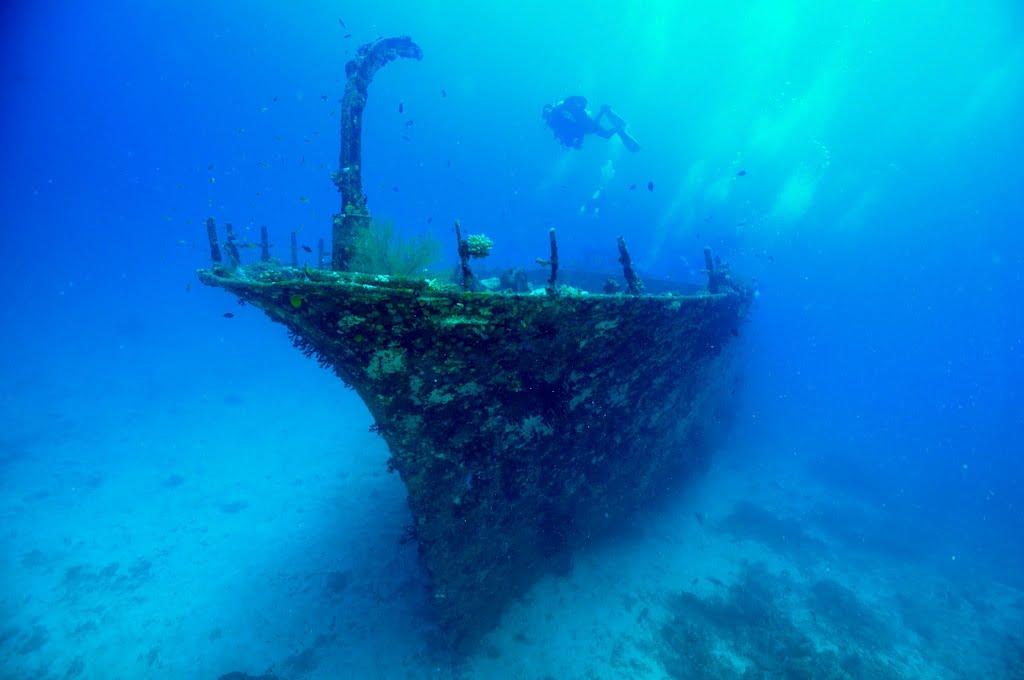Diving among the hundreds of species of fish and corals that populate the Maldivian waters is an obligatory stop on the path of every diver ...
… Deciding to do it on board a comfortable cruise boat is certainly the best way to obtain maximum satisfaction with minimum effort!
The Maldives are one of the most famous diving destinations in the world for its underwater riches and variety of dive sites.
You are spoiled for choice, but you need to know the currents, tides and know how to choose the side of the atoll and the place to dive in relation to the time of year, all variables that greatly affect the quality of the dive and what will be seen.
The instructors and dive guides on board have all the experience and knodledge necessary to lead guests through these enchanted places and it will be possible to see in a single week of cruise between the different atolls: groups of gray sharks in current, manta rays that fly undisturbed above the divers, observe reef walls completely covered by colorful alcionaries and unforgettable encounters during night dives!
SEASONS
In Maldives there are two main seasons, the dry one (monsoon blowing from the north east) and the wet one (monsoon blowing from the south west). During the dry season, from December to May there is usually good weather and calm sea, while during the wet season, from June to November, there can be downpours, strong winds and rough seas.
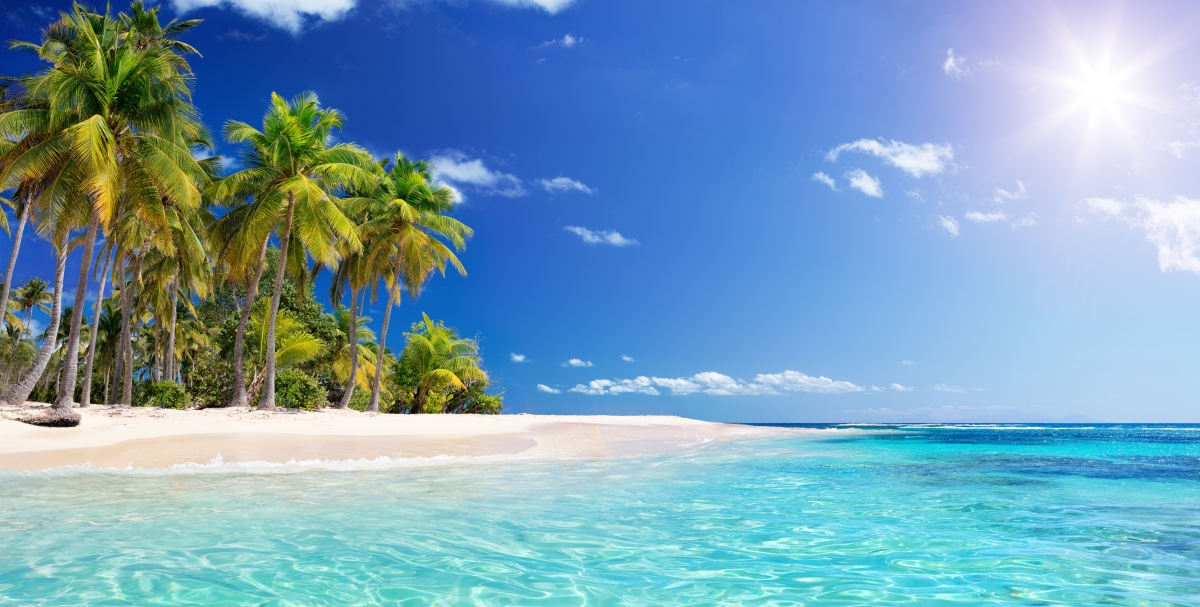
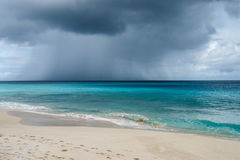
About diving is necessary to keep in mind the direction of the currents.
The north east monsoon (from December to May) conveys the plankton transported by the current to the west, while the south west monsoon (from June to November) conveys the plankton towards the east. So alternatively we will have one side of the atolls with water rich in plankton and therefore more turbid but with the possibility of seeing manta rays and whale sharks, and in the opposite side crystal clear water and sharks!
For these reasons, if you want to dive in the middle of the mantas to observe their evolutions and their spectacular and elegant dance, during the north east monsoon you must necessarily choose the west side of the atolls, while during the south west monsoon the east side will be chosen.
The speech becomes complex and almost incomprehensible for those who do not know the natural mechanisms related to the prevailing winds, tides and sea currents, but with us all you need to do is express your wishes, we will illustrate all the possibilities offered by the cruise and cruise passengers will only have to decide what they prefer to see. At this point the cruise will follow a route designed to measure according to the personal expectations of those on board that week.
In the Maldives the multiple dive sites have different characteristics :
OCEAN REEF
By ocean reefs we mean coral reefs on the outer side of the atoll, here we do drift dives following the current direction and we can observe the marine life without making any effort. We will dive among a multitude of coral fish, Napoleon fish, turtles, eagle rays, reef sharks and other pelagic fish species such as tuna, jackfish and barracuda.
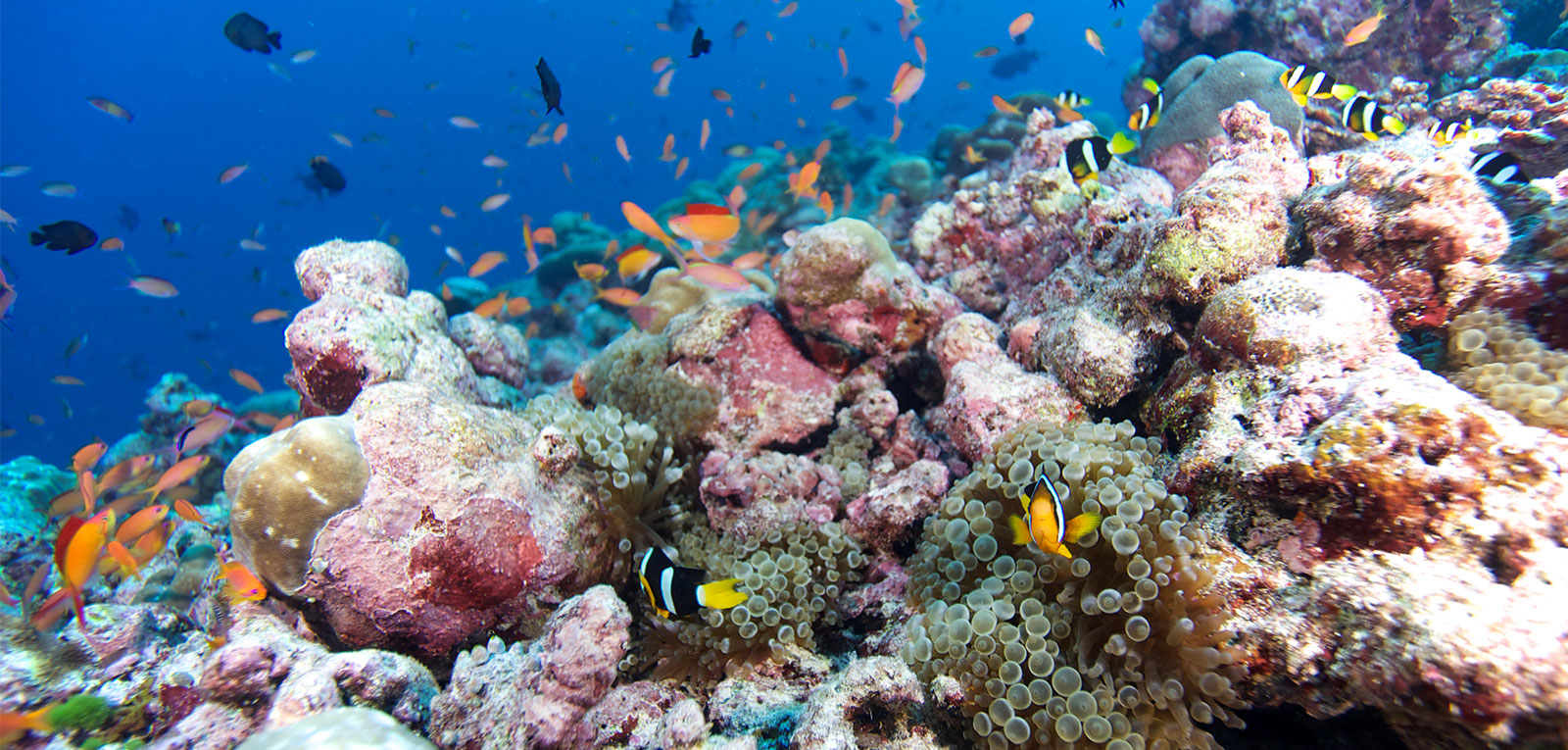
GIRI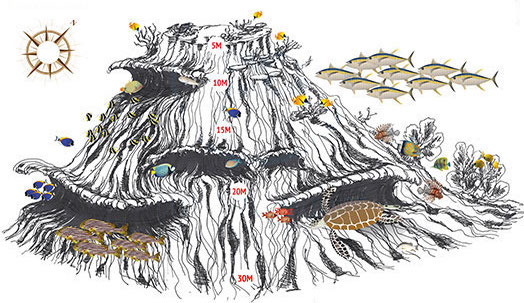
A Giri is a shoal that almost reaches the surface. It is a coral platform with the top at about -2, -3 meters deep.
They are located inside the atolls and therefore less exposed to currents.
The Giri is a place of refuge and hunting for medium to small sized fishes and in this dives we focus on the small and colorful reef life.
THILA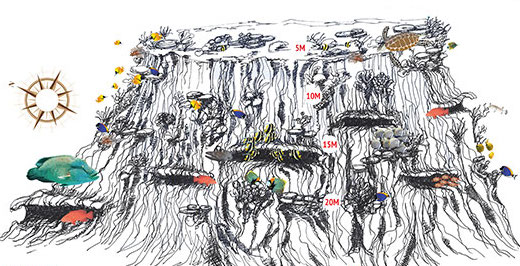
The Thila is a madreporic formation that rises from the sandy bottom, very rich in life, they are found inside the atolls but also in the center of the channels.
The top is between -5 and -20 meters deep. Depending on where the Thila is located, in a canal or in the middle of the atoll, it is exposed to currents sometimes even sustained.
They have caves and numerous overhangs capable of hosting various species of fishes, the walls are rich in colorful soft corals and around the thila we can see also pelagic fish.
Some of the Maldivian Thila have been classified among the ten best dive sites in the world!
PASS - KANDU
Pass are the channels that connect the calm waters of the atoll lagoons with the open ocean, here the currents push a considerable abundance of nourishment that attracts many organisms including large pelagic fish that in some cases even become sedentary.
The mythical dives in the oceanic "pass", Kandu is the term in the Maldivian language, are particularly loved by experienced divers looking for strong emotions with the opportunity to have unforgettable encounters with many pelagic fish.
Here the currents depending on the tide excursion and the season can also be of strong intensity and allow us to do incredible drifting dives and to "fly" through the channel: a very special feeling!
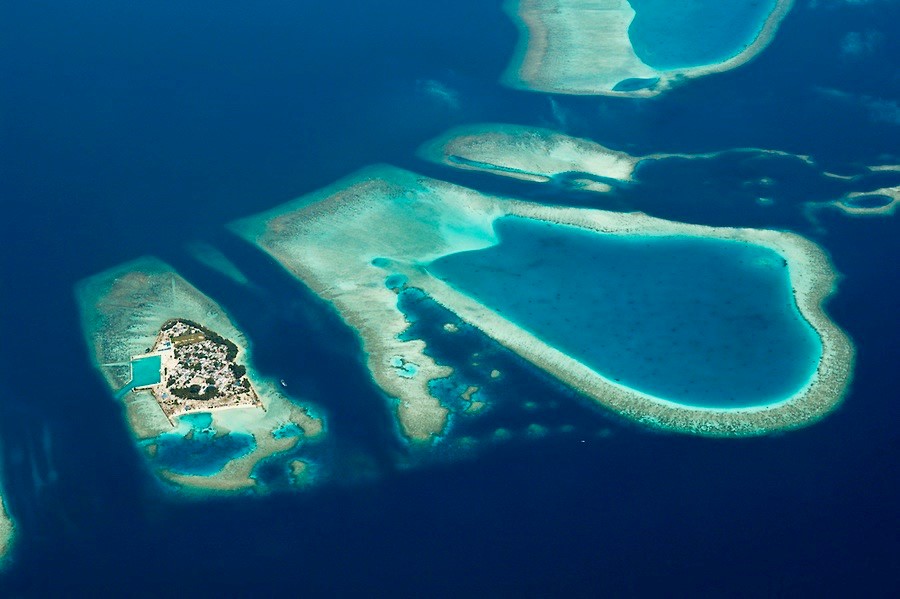
MANTA POINT
The manta point is a cleaning station for the Mantas, is an area where they go to be cleaned by the cleaner fish but are also a meeting point to find a partner.
During the year, manta rays migrate from one side of the Maldivian atolls to another, following the currents. This is how you can meet these fascinating animals in winter (December-April) in the dive sites west of the atolls, while in summer (May-November) in the east.
Visibility in water due to the high concentration of plankton can sometimes be slightly cloudy.
Manta rays (Manta Alfredi) are one of the most sought after and exciting encounters so thousands of divers book holidays to the Maldives every year: in fact, a population that is estimated to be the largest in the world, lives permanently throughout the year!
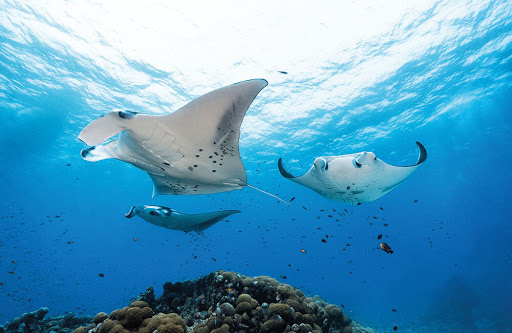
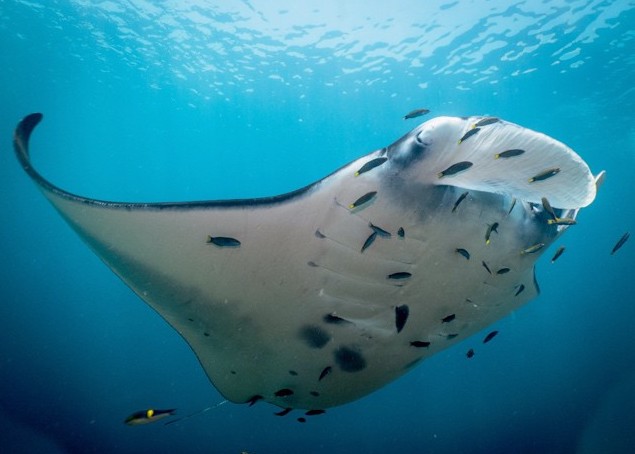
The Maldivian government has created several marine protected areas located at the points of aggregation of manta rays and identified specifically for their protection.
As divers we can also make a contribution to the conservation of these beautiful animals, respecting a few simple rules:
It is possible to actively contribute to research in this field by sharing our shots of manta rays on the site https://www.mantatrust.org/idthemanta, reporting the place and date of the meeting. In this way, we will help researchers map the distribution of animals and track their movement.

NIGHT DIVES
Nights dives are generally during or after sunset on the Giri or Thila inside the atoll, they do not present particular difficulties even if sometimes there may be a light or moderate current.
It will be possible to see many fish and turtles who sleep peacefully and around them the nocturnal predators such as moray eels, stingrays, white tip sharks, trevally and jack fish starting their hunt; the most famous night dive in the Maldives is with nurse sharks!
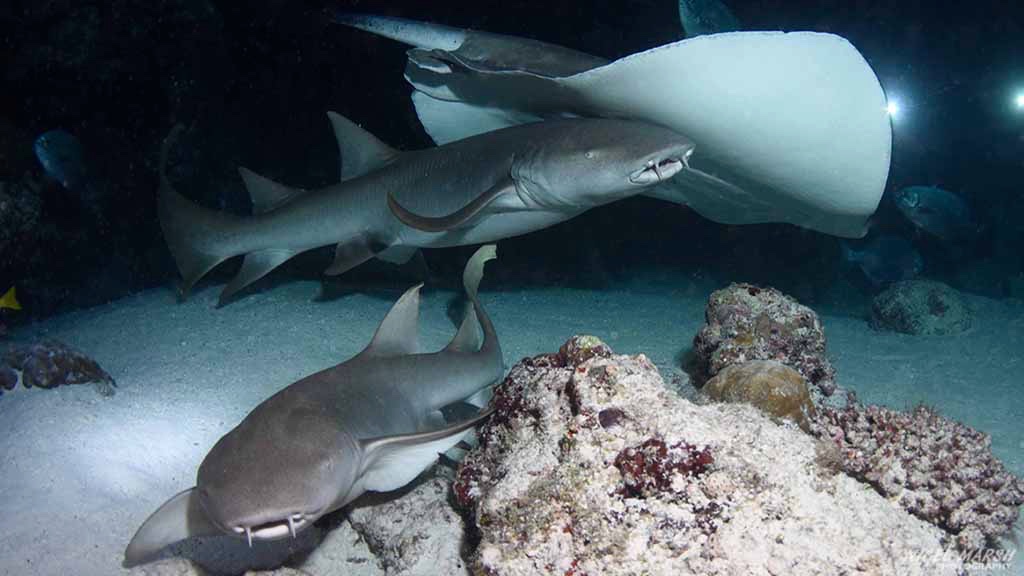
WRECKS
In the Maldives there are not many dives with ship wrecks but the most of them are completely intact because they have been sunk on purpose to create artificial reefs.
Are dives without any difficulty, fun and full of life, you can discover many hidden fish as well as admire the structure of the wreck completely covered by coral and observe how much marine life has integrated with the hulls.
